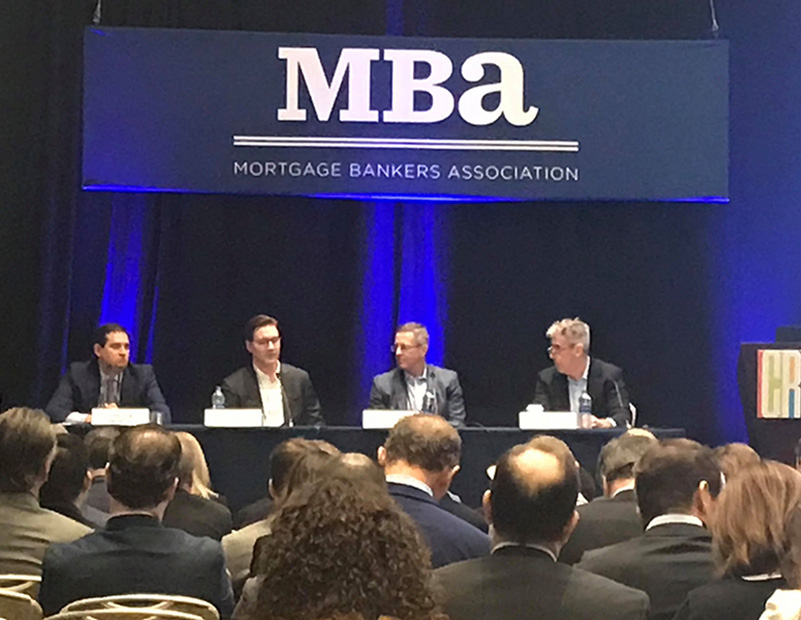The Rising Influence of CRE Debt Funds
These vehicles, which offer investors a late-cycle equity alternative, were the talk of the MBA CREF conference in San Diego.

Left to right: Peter Sotoloff, Justin Guichard, Jack Gay and Jeff Friedman.
Debt funds or “the alternative lenders,” as they are also known, were brought up in just about every breakout, general session and conversation at the MBA CREF conference in San Diego. These funds—there are estimated to be about 140 of them—have quickly become a formidable and aggressive competitor, mostly in the short-term bridge lending space.
Debt funds originated about $67 billion in mortgages in 2018—about 10 percent of total originations, up from $52 billion in 2017 and $32 billion in 2016, according to Jamie Woodwell, vice president of Commercial-Multifamily Research at the Mortgage Bankers Association. “They are clearly a significant player,” he said.
Much of the discussion surrounding opportunity funds, which offer investors a relatively secure and short-term equity alternative late in the cycle, was about whether or not these maturing vehicles will expand their narrow product scope and become a fiercer competitor. And there were questions about whether or not they would exit the market when capital becomes more expensive and market fundamentals inevitably weaken.
At a standing-room-only breakout titled “Debt Funds and the CRE Finance Ecosystem,” a panel of fund sponsors noted that banking regulations, self-discipline on the part of the banks and fewer banks overall have allowed these funds to raise and deploy debt capital. And, despite the pro-business Trump Administration, the regulations are expected to stay largely intact.
“That has really created an opportunity for us—that discipline,” said Jack Gay, managing director & global head of debt for Nuveen Real Estate.
In addition to creating business for fund players, the banks’ “impressive” level of discipline has also helped keep the cycle long, noted Peter Sotoloff, managing director of Mack Real Estate Credit Strategies LP.
Meanwhile, according to the panelists, banks also appreciate the funds’ ability to participate in the capital stack. By allowing a debt fund to invest in a portion of a borrower’s requirement, banks reduce their risk and increase their proceeds. “After borrowers, our biggest partners are banks and insurance companies,” said Oaktree Capital Management LLC Managing Director Justin Guichard.
Are They Short- or Long-Term Players?
The panel’s moderator, Mesa West Capital co-founder Jeff Friedman, asked the sponsors if there were finding too much debt fund capital in the market. And what about spreads having narrowed by 100 basis points?
The panelists seemed confident that, despite capital being incrementally more expensive, there was ample business left from which they could offer their investors strong risk-adjusted returns, particularly in the larger loan and higher quality property spaces where there are fewer competitors. “We are capital constrained, not opportunity constrained,” said Sotoloff.







You must be logged in to post a comment.